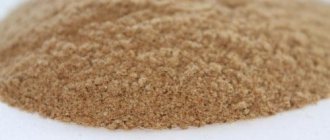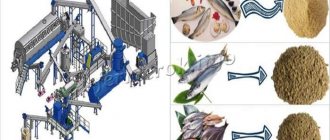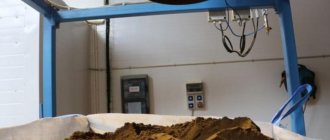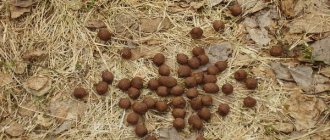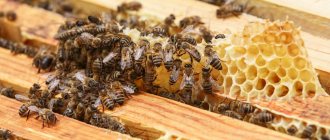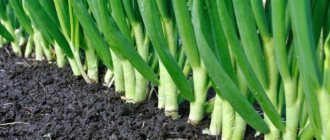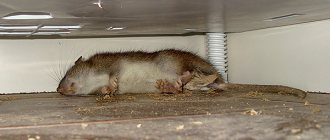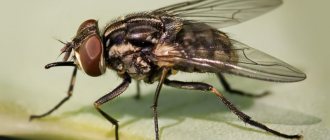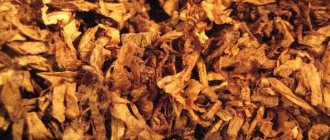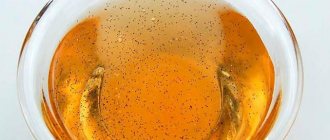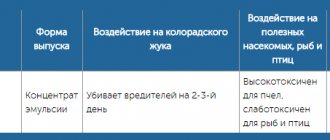Home / Preparations and fertilizers
Back
Published: 10/01/2021
1
5/5 — (1 vote)
Gardeners who prefer organics use bone meal as a phosphorus fertilizer in their dachas. The natural product is affordable, environmentally friendly, and at the same time enriches the soil with nutrients necessary for plants.
Bone meal, due to its characteristics, will not completely replace fast-acting mineral fertilizers, but it is quite suitable as an adjuvant. The main thing is to know the composition and characteristics of the substance, following the rules of use to obtain the maximum effect.
- 1 What is bone meal
- 2 Types
- 3 “Pros” and “cons” of fertilizer
- 4 Norms and methods of application by crop
- 5 Storage
- 6 Reviews
What is bone meal
Bone meal has been used as a fertilizer for plants for a very long time. Low cost, rich chemical composition and high bioavailability (the ability of plants to absorb microelements) make this drug quite in demand.
The main chemical elements that bone meal gives to crops through the soil are phosphorus, calcium, potassium, and nitrogen. All of them are vital for normal growth and maturation of plants.
The main emphasis is on bone meal as a source of phosphorus (over 30% is the content of phosphorus compounds, in particular phosphorus oxide (V). In addition, when adding flour, the acidity of the soil decreases.
When choosing a fertilizer, you need to take into account that it comes in several types, which differ in phosphorus content:
- classic (low phosphorus, only 15%);
- steamed (phosphorus content increases to 25%);
- low-fat (maximum phosphorus content, 35%, but low nitrogen) - ideal for acidic soils for the purpose of neutralization.
To maximize the effect, before use you need:
- sift the flour, remove and grind all large pieces, bringing it to a homogeneous structure;
- reduce the recommended dosage to prevent an excess of elements in the soil;
- determine the composition (at least minimally) and pH of the soil (using litmus paper) in order to understand what dosage of flour we are talking about and whether it will do harm instead of benefit.
Bone meal is used not only as a supplement in case of micronutrient deficiency, but also as a prophylactic agent. It is worth buying it from trusted sellers in order to get a quality product, and a mixture of flour with chalk, crushed eggshells, lime, soda or even sand. There will be little benefit from such “fertilizer”.
What does bone meal look like?
Bone meal is a popular fertilizer. It is relatively cheap, but to avoid being scammed, you need to imagine what a quality product looks like.
The product, which does not contain any additives (and there should not be any), looks like a fine, homogeneous light brown powder. When treated with steam, bone meal forms granules - the color does not change, the granules must be the same size.
Any change in color indicates the presence of foreign impurities: soy, chalk, sand, lime. There shouldn't be any unpleasant smell either.
Storage
Since bone meal is a natural animal product, storage conditions and periods should be carefully observed. On the fertilizer packaging, manufacturers indicate the date of manufacture and exact terms of use.
Do not use expired additives! Place bags of flour in a ventilated area, avoiding moisture and direct sunlight. Poor-quality fertilizer acquires a putrid or musty odor and is not suitable for use.
Composition of bone meal
Since we are talking about organic fertilizer, it contains a large amount of organic substances. Flour of the first type is rich in protein, the second and third - in fat and ash.
If we talk about micro and macroelements, then bone meal contains, in addition to the phosphorus and nitrogen already mentioned, potassium, calcium, sodium, copper, iron, iodine, manganese, organic acids, B vitamins, amino acids. All of them are necessary for plants at different stages of growth and development.
Bulbous flowers
When planting tulips, daffodils and lilies in your summer cottage, you should pay attention to organic phosphorus fertilizer (bone meal). The substance is poured directly into the prepared funnel. The dose is 1:1 relative to the soil. It is thoroughly mixed with bone meal, slightly compacted, and then the crop is planted. In spring, the flowerbed will sparkle with a variety of bright flowers.
Acidic soil will require plenty of bone meal to provide phosphorus and calcium.
What is bone meal used for?
The drug is a “long-lasting” fertilizer - bone meal applied to the soil decomposes for about 7-8 months, gradually releasing nutrients and feeding both seedlings and adult plants.
Thanks to timely feeding, the plants’ immunity is strengthened and the root system gains strength. Both of these factors are of great importance for growth, development, flowering and fruiting.
It is optimal to apply fertilizer before the plants are planted.
In order for fruit trees to quickly and efficiently recover after a bountiful fruit harvest, they are fed with bone meal. This measure also contributes to the formation of buds next year and increased resistance to frost (which makes it easier to overwinter).
Bone meal can be used to feed pots and indoor plants.
What is bone meal made from?
There are several types of bone meal. In addition to what is obtained from the bones of cattle (cows, for the most part), depending on the source raw material, there are:
- Fish. Flour, which is obtained by processing fish (skeleton, tissue, fat). Rich in protein and phosphorus, it is used as a feed additive in livestock.
- Horn-ungulate. The raw materials used are horns and hooves (as the name implies), which contain a lot of nitrogen. This flour is also used in animal husbandry.
- Bloody. It is the dried blood of pigs, chickens, cows. Used as fertilizer for plants and animals. Rich in protein, iron, contains amino acids. Stimulates the growth of green mass; it is added to the soil in a mixture with ordinary bone meal.
- Armored. Obtained from the shells of crustaceans. Not the most common type of fertilizer. Rich in protein.
- Meat and bone. It is obtained from meat and fish production waste (dead livestock, carcasses that are not suitable for the food industry). The raw materials are scalded, crushed and treated with steam. Composition: 50% - protein, 35% - ash, 10% - fats, the rest - water. Used as animal feed.
Liquid fertilizer
There is another option for using bone meal as a plant feed. To prepare liquid fertilizer you will need:
- Bone meal – 100 grams;
- Hot water - two liters;
- Cold - 4 buckets.
The flour is poured with hot water, the mixture must be kept for at least a week, stirring it regularly. After this, the mixture should be filtered and diluted with cold water in the amount of four buckets. Using liquid fertilizer a few weeks before harvest will make vegetables and berries much tastier.
Bone meal is a useful fertilizer with a rich composition, however, it should be supplemented. For example, when planting plants in spring, bone fertilizing alone is not enough, since at the very beginning of its life the plant requires a lot of nitrogen. Therefore, along with bone meal, you should add other organic fertilizers that are rich in nitrogen.
Pros and cons of fertilizer
The chemical composition of the fertilizer makes it very useful and causes wide distribution. Due to the high concentration of phosphorus, the presence of potassium, calcium, and nitrogen, bone meal stimulates the development of the root system and increases resistance to various diseases.
Pros:
- Thanks to timely fertilizing, you can achieve abundant and long-lasting flowering of garden plants. Various varieties of roses are especially partial to fertilizer;
- tomatoes, onions, garlic, zucchini, sweet peppers, potatoes respond well to feeding with bone meal;
- phosphorus and other chemical elements are contained in the fertilizer in a bioavailable form and are easily absorbed by plants;
- bone meal is quite cheap, which increases its popularity;
- the product is natural, environmentally friendly;
- mixes well with soil, dissolves in water, decomposes for a long time, ensuring the supply of microelements over a long period of time.
Minuses:
- not suitable for slightly alkaline and alkaline soils with a pH above 7, since it “works” only in slightly acidic soils;
- on soils rich in phosphorus, bone meal causes an overdose, which leads to oppression and diseases of the root system, slower growth, yellowing of leaves (but this is more a matter of improper application than a lack of fertilizer);
- the persistent smell attracts animals - dogs, cats, rodents. The former can get poisoned if the fertilizer is not incorporated into the soil; rats and moles can ruin the plantings;
- Blood meal is banned in some countries due to the risk of transmitting mad cow disease.
Advantages
Concentrated fertilizer that does not require dilution. Considered safe and inexpensive. It is allowed to apply even a few weeks before harvest.
The use of bone meal as a fertilizer can significantly improve the composition of the soil after just six months. It becomes softer and more nourishing.
Bone meal has the following effects on plants:
- Plant growth is activated, they develop better;
- Productivity increases;
- Plant roots become stronger and develop better;
- Flowering improves;
- The use of bone powder has a positive effect on shoot growth and fruiting.
Soil enriched with bone meal allows the crop to avoid oversaturation with pesticides. Since phosphorus does not dissolve in water, the fertilizer is absorbed by plants slowly and gradually. And fertilizing remains effective throughout the entire growing season.
The advantages of this type of feeding include safety in case of possible overdose. This will not have any negative impact on the soil or plants. In addition, bone meal has no odor at all and does not require special storage space.
Bone meal should not be used to fertilize soil in which crops that prefer acidic soil will grow. This type of fertilizer can deoxidize the soil.
How to make bone meal
If you have raw materials, bone meal can be prepared at home. It will be useful to plants. To do this you need to stock up on bones. Both cattle bones, poultry bones, and fish bones are suitable.
The bones need to be washed well and freed from any remaining meat. Then place on a baking sheet and place in an oven preheated to 2000C.
For small bones, an hour is enough; if the bones are large, then the time needs to be increased. As a result of this heat treatment, the bones become brittle and loose as the water evaporates.
Remove the baking sheet and let the bones cool. Then the bones need to be crushed. This can be done using a mortar and pestle, a food processor, or a regular hammer (the raw materials are wrapped in a bag so that the crumbs do not crumble).
Production Features
In South and Latin America, fishmeal is produced in huge quantities. Manufacturers sell it to many countries around the world. This fertilizer is also imported to Russia.
But compared to flour made from animal bones, fish feeding is not yet particularly popular among Russians who produce fruits, vegetables and berries. But in agriculture, when raising cattle, pigs, and poultry, it is used as a nutritional supplement for complementary feeding.
To produce organic fertilizer, bones and soft tissues of all types of fish are used. The content of proteins, fats, and easily digestible proteins makes organic fertilizer indispensable when raising animals and birds.
In the production of garden and vegetable products, fertilizing is highly valued for its high nitrogen content. Phosphorus in it is no more than 16%. All elements are absorbed over a long period of time, so one feeding is sufficient during the growing season. Fish bone meal is especially valuable and indispensable during flowering.
Application of flour
Before applying bone meal, you need to measure the pH of the soil. This can be done using litmus paper.
A pH value of 6 and below suggests the application of fertilizer. Phosphorus deficiency is also indicated by slower plant growth, changes in leaf color and stem shape.
Bone meal for animals
Bone meal has been actively used for a long time as a dietary supplement for animals. It is used for dogs (1 tsp per 10 kg of weight) and other pets.
Meat and bone meal increases the nutritional value of feed, enriching it with protein, vitamins, amino acids, and minerals. This allows you to fill the deficit, normalize metabolism, and reduce material costs for purchasing feed.
Bone meal is given:
- during the period of teeth change, to compensate for the lack of phosphorus and calcium;
- for the proper development and growth of young animals;
- for the prevention of skeletal diseases;
- during lactation to prevent vitamin deficiency;
- to improve immunity and prevent vitamin B deficiency.
For chickens
Poultry are fed with bone meal, enriching the feed with calcium and protein, which significantly increases the productivity and egg production of chickens.
Meat and bone meal makes up 3-7% of the total volume of dry food. Exceeding the dosage is not recommended, as this can lead to the development of joint diseases - gout, amyloidosis. Bone meal is added in a volume of 0.5-0.8%.
For plants
Fertilizer is applied to open ground in advance, before planting, working into the soil at the rate of 2-3 tbsp. per 1 m2. Fertilized soil must be thoroughly moistened.
You can apply fertilizer directly to the holes:
- for garden bushes and trees - 2 tbsp.;
- when planting or transplanting rose bushes - 3 tbsp. l, when feeding adult plants - 50 - 100 g of powder is embedded in the root circle, the soil is mulched;
- for bulbous flowers - 2 tbsp. l. ;
- for strawberries - 300 per 1 m2 (embedded in the soil);
- for house plants – ½ -1 tsp.
As an aqueous solution:
- stir ½ kg of bone meal in a bucket of hot water (10 l);
- leave to infuse for 5-7 days;
- dilute at the rate of 1 part fertilizer - 10 parts water;
- fertilize the plantings using the root method.
Norms and methods of application by crop
Before using phosphonitrogen, be sure to examine the soil in the area for acidity.
On a note! Every gardener and gardener must know the pH of the soil on the site in order to apply any fertilizers according to the parameters.
Flour is not added to alkaline and neutral soils; it is mandatory to use on acidic soils - to balance the composition and deoxidation.
Directions for use:
- for digging (dates - autumn or early spring);
- in holes or planting pits before planting seedlings;
- embedding into the ground with a rake (usually this method is recommended for greenhouses so as not to turn the soil over);
- in liquid form as a solution.
The powder is not recommended to be mixed with mineral fertilizers. But the combined use of phosphonitrogen with poultry droppings, humus, and compost is allowed. Good results when applying the additive are obtained on poor soils.
The table shows the norms and methods for applying bone powder to various crops.
| Cultures | Methods, application rates | Deadlines | Notes |
| Tomatoes |
| Spring, autumn | |
| cucumbers |
| Spring | |
| Potato |
| Spring | |
| Strawberry |
| Spring, autumn | Liquid fertilizing is allowed during the growing season |
| Flowers | In the holes before planting, 2 tablespoons of the additive | Spring, early summer | |
| Fruit trees | During planting of seedlings. 2-3 cups per hole with mixing with soil | Spring, autumn | |
| Berry bushes | During planting of seedlings. One glass per hole with soil mixing | Spring, autumn | |
| Lawn | Incorporation into the ground when preparing the area for sowing lawn grasses. 2-3 large glasses per 1 square meter | Spring | Embed into the ground using a rake; no powder is left on the surface. |
Liquid feeding with bone meal is indicated for tomatoes, eggplants, sweet bell peppers, and cucumbers. This fertilizer is especially suitable for heavy soils. Reviews from summer residents say that productivity increases and the taste of fruits improves.
But we must remember that the supplement acts slowly, so you should not expect immediate results. This is a long-lasting fertilizer, so to achieve an immediate effect (for example, with a critical lack of phosphorus in plants), mineral compositions are recommended.
When adding phosphonitrogen to the mixture, humus or mullein, flour, and coarse river sand are used. Proportion: 1:2:3. Chicken manure is also added to the mixture, the proportion will be: 1:2:3:1.
